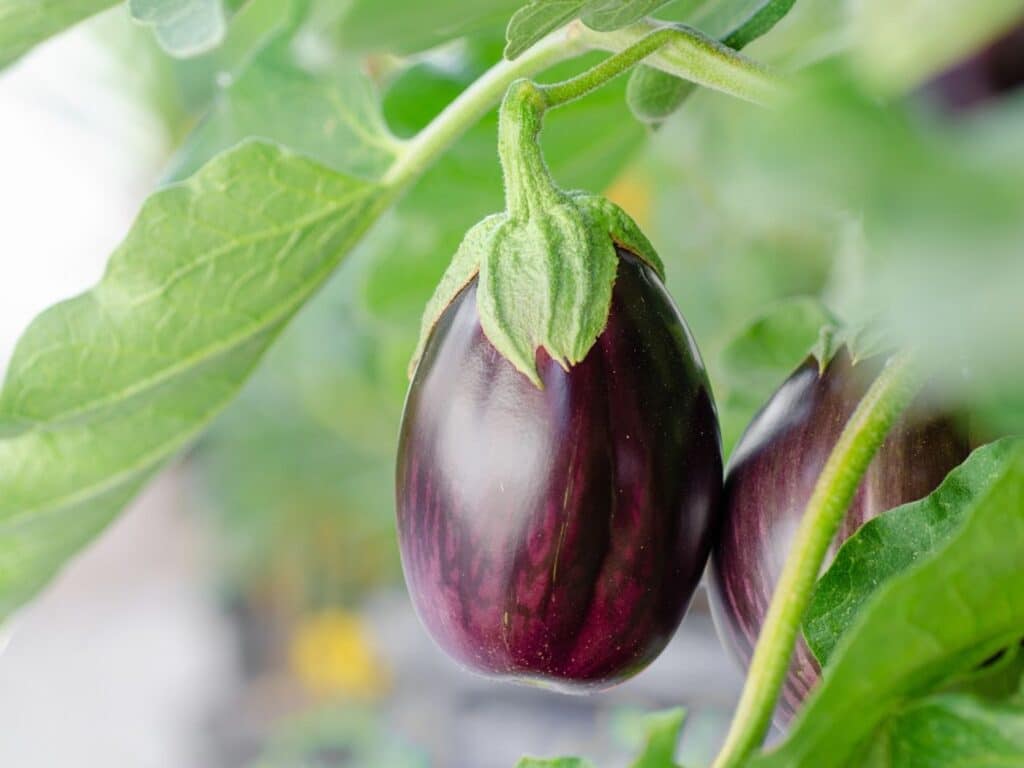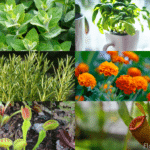You’ve been nurturing your eggplants with care, but suddenly, you notice a worrying change – their vibrant green leaves are turning yellow. What could be going wrong? Is it a sign of disease, a nutrient deficiency, or something more sinister? Don’t worry, you’re not alone in this gardening predicament.
Understanding Eggplant Leaves Turning Yellow
The Basics of Plant Chlorosis
When observing eggplant leaves turning yellow, you’re likely dealing with a condition named plant chlorosis. This phenomenon refers to the insufficient presence of chlorophyll, crucial for photosynthesis.
Chlorophyll’s shortage creates a yellow hue on the leaves, signifying that your plants aren’t operating optimally. It can be sparked by many issues like nutrient deficiencies, inconsistent watering, or specific disease and pest invasions. Spotting this condition early can make a profound difference in your plant’s health, leading to more effective corrections.
Typical Symptoms and Diagnosis
Recognition is the first step in battling yellowing eggplant leaves. Numerous factors can exhibit this kind of plant distress, hence mastering the symptoms helps you pinpoint the issue and rectify it swiftly.
Pale yellow leaves are the glaring manifestation of chlorosis. Often, the yellowness first appears in between the veins, giving the leaves a striped look. In advanced cases, leaves turn completely yellow or even drop off.
Other red flags can include stunted growth and fewer fruits. Diagnosing the precise cause requires keen analysis of plant behavior, soil condition, and even the local weather conditions. Regular monitoring of these variables aids in the rigorous care needed for gardening success.
Common Causes of Yellowing Leaves in Eggplants

Addressing yellowing leaves in eggplants involves examining common causes. Let’s probe further into the various factors that could possibly lead to this issue.
Nutrient Deficiencies
Your eggplants may well be greeting you with yellow leaves due to a lack of vital nutrients. The required minerals for these plants include nitrogen, phosphorus, and potassium.
For example, a nitrogen shortage often gives a pale hue to the leaves while a potassium deficit shows up as yellowing along with wilting edges. Regular soil testing may well give you a clear picture of nutrient deficits your plants face, allowing you to promptly rectify deficits with appropriate fertilizers or organic matter.
Water Stress
Off-color eggplant leaves may well be an announcement of water stress. Both overwatering and underwatering can equally stress the plant and lead to yellow-colored leaves.
For example, too much water can cause root rot, which blocks nutrient uptake leading to leaf yellowing. Conversely, inadequately watered plants lose the vibrant leaf color, turning them to a pale yellow. Maintaining a balanced watering schedule corresponds directly to your eggplant’s well-being.
Pest Infestations
Insects and pests can indeed harm your eggplants, resulting in yellowing leaves. Common threats include aphids, spider mites, and whiteflies. These creatures feed directly on the plant sap, affecting the plant’s overall health.
For example, aphid infestations can be identified by curled, yellow leaves along with a sticky residue on the plant. Following a pest control routine can preserve your eggplants from such damaging interactions.
Diseases Affecting Eggplants
Finally, diseases are notorious for discoloring eggplant leaves. Fungal, bacterial, or viral pathogens may well be the culprits. For example, verticillium wilt, a fungal disease, first causes yellowing and wilting of lower leaves before climbing up the plant.
Understanding the symptoms of various diseases can aid in a timely diagnosis, thus allowing you to control the disease before it becomes a major issue. Remember, an ounce of prevention is worth a pound of cure. Regular spray of fungicides and an overall healthy growing environment can keep diseases at bay.
How to Treat Yellow Leaves on Eggplants

Adjusting Your Fertilization Routine
Start by modifying your fertilization routine. Eggplants crave nutrients, chiefly nitrogen and potassium. If these elements aren’t sufficient, the leaves may lose their healthy green hue, sinning yellow.
Consider using a high-quality, balanced fertilizer. Go for a 14-14-14 NPK ratio, indicating equal proportions of nitrogen, phosphorus, and potassium. Infuse it into the soil, relying on the manufacturer’s instructions, usually every two weeks to provide your eggplants with the essential nutrients they crave.
Balancing Water Supply
Move on to your water management techniques. Eggplants appreciate an even moisture environment, but don’t appreciate waterlogged roots. Hence, you should water deeply yet infrequently.
Typically, one to two inches of water per week suffices. Immediately empty saucers under potted plants post watering, and ventilate greenhouses or enclosed spaces regularly to prohibit excessive humidity. Mulch aids in retaining soil moisture without overwatering, it’s advisable to spread it around your eggplants, excluding direct contact with the stem.
Pest and Disease Management
Wrap up your treatment plan with preemptive pest and disease control. Aphids, spider mites, and flea beetles prove to be common foes. A mild insecticidal soap generally does the trick.
Spritz it on your plants early in the morning or late in the evening to prevent these pests. Diseases such as Verticillium wilt require more aggressive intervention.
If this disease is afoot, your best bet lies in removing and disposing of the infected plants. Act proactively, rotating your crops, employing disease-resistant varieties, and sanitizing your gardening tools regularly. These tactics drastically cut your chances of trouble.
Preventive Measures for Healthy Eggplants
Maintaining robust eggplants requires preventive actions that thwart potential issues before they escalate. We focus on two dominant methods: soil assessment and modification, and optimum plant spacing and care.
Soil Testing and Amendment
Regular soil testing forms an essential preventive measure. Analysis of soil properties helps detect nutrient deficits impacting a plant’s health. You may well uncover shortages of nitrogen, phosphorus, or potassium, significant elements needed for the plant’s growth and development. Additionally, identifying problematic pH levels aids in maintaining suitable acidity conditions for eggplants.
For deficient soils, there’s a solution: soil amendment. You don’t just dump fertilizers and hope for the best. Effective soil amendment involves the use of organic matter like compost or manure, or inorganic matter like lime or gypsum. Integration of these materials can replenish your soil nutrients, improve water holding capacity, and rectify pH levels, thus fostering healthier eggplants.
Proper Plant Spacing and Care
Observing appropriate plant spacing lands as another crucial preventive measure for eggplant health. Spacing aids in efficient nutrient uptake, reducing competition among plants. Furthermore, proper separation decreases the chance of disease spreading from one eggplant to another.
Aside from spacing, consistent plant care goes a long way in preventing leaf yellowing. This entails timely watering – not too little to cause stress, and not too much to waterlog the roots. Insect management is also important, keeping damaging pests like aphids and spider mites at bay.
Regular visual inspection helps detect pests early, allowing prompt measures to curtail their numbers. Sports of plant diseases can be nipped in the bud as well through frequent plants checks.
Summarily, prevention proves years better than cure when dealing with yellowing eggplant leaves. Incorporating routine soil tests and amendments, proper plant spacing, and vigilant plant care into your gardening habits can save you significant efforts down the line, ensuring the growth of healthy, fruitful eggplants.
FAQs
What are the causes of yellow eggplant leaves?
Several factors contribute to eggplant leaves turning yellow. These include nutrient deficiencies, incorrect watering techniques, pests, and plant diseases. Identification of specific symptoms and understanding of the plant’s environment are crucial in pinpointing the exact cause(s).
How can soil testing help prevent yellow eggplant leaves?
Soil testing is an essential preventive measure against yellowing eggplant leaves. It allows the gardener to identify and address nutrient deficiencies in the soil. Additionally, it helps determine pH levels, facilitating the necessary soil amendment to create optimal conditions for eggplant growth.
How does plant spacing contribute to healthier eggplants?
Proper eggplant spacing plays a significant role in plant health. It ensures that each plant can efficiently absorb nutrients and prevent the spread of diseases. Overcrowding can intensify competition for resources, potentially leading to nutrient deficiencies and disease susceptibility.
What gardening practices can help maintain healthy eggplants?
Regular and attentive care, including appropriate watering and pest management, is essential to maintaining healthy eggplants. Watering should be carried out timely and adequately, while regular inspections for pests can help catch and manage infestations before they cause significant harm.
What is the importance of preventive actions in eggplant care?
Preventive actions like routine soil testing, correct plant spacing, and vigilant plant care can prevent many issues before they become problematic, including the yellowing of leaves. These practices help to ensure the growth of robust, healthy, and productive eggplants.
Up next:







